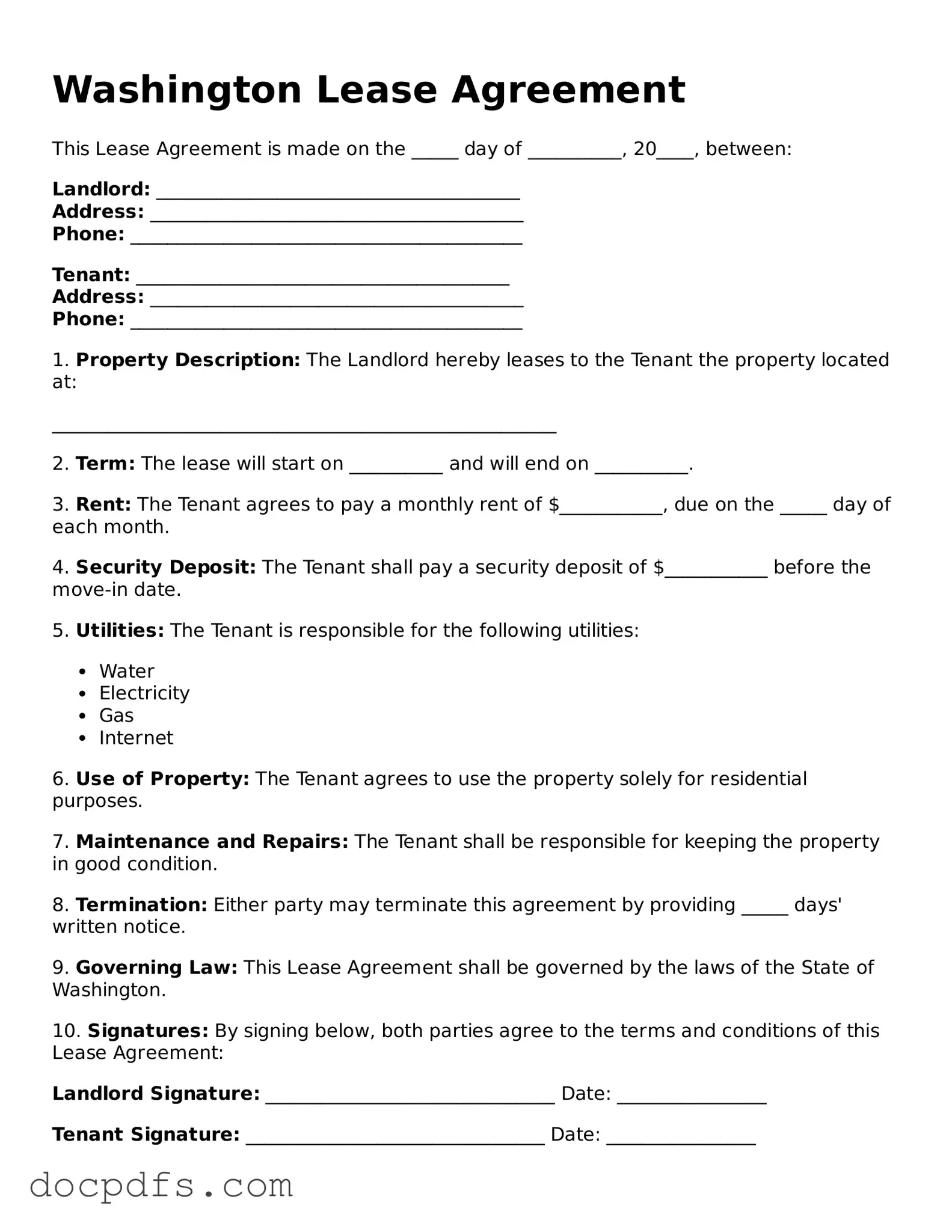What is a Washington Lease Agreement?
A Washington Lease Agreement is a legal document that outlines the terms and conditions under which a landlord rents property to a tenant in the state of Washington. This agreement serves to protect the rights of both parties, ensuring that expectations are clear and that responsibilities are understood. It typically includes details such as the duration of the lease, rent amount, payment due dates, and rules regarding property use.
What should be included in a Washington Lease Agreement?
When drafting a Washington Lease Agreement, it is essential to include several key elements to ensure clarity and legal compliance. These elements typically include:
-
Names of the Parties:
Clearly identify the landlord and tenant.
-
Property Description:
Provide a detailed description of the rental property, including the address.
-
Lease Term:
Specify the start and end dates of the lease.
-
Rent Details:
State the amount of rent, due dates, and accepted payment methods.
-
Security Deposit:
Outline the amount required for the security deposit and conditions for its return.
-
Rules and Regulations:
Include any specific rules regarding property use, maintenance, and tenant behavior.
How long does a lease typically last in Washington?
In Washington, leases can vary significantly in length. Most commonly, leases are either short-term (month-to-month) or long-term (one year or more). A month-to-month lease allows for flexibility, as either party can terminate the agreement with proper notice, usually 20 days. A long-term lease, on the other hand, provides stability for both the landlord and tenant, but it may require more commitment.
Are there any tenant rights specific to Washington?
Yes, tenants in Washington have specific rights that are protected by law. Some of these rights include:
-
The right to a habitable living environment, meaning the property must be safe and meet basic health standards.
-
The right to privacy, which means landlords must provide notice before entering the property, except in emergencies.
-
The right to fair treatment, protecting tenants from discrimination based on race, gender, or other protected characteristics.
Understanding these rights is crucial for tenants to ensure they are treated fairly throughout their rental experience.
What happens if a tenant needs to break the lease?
If a tenant needs to break the lease, it is important to review the lease agreement for specific terms regarding early termination. In Washington, tenants may be able to break a lease under certain circumstances, such as:
-
Active military duty.
-
Domestic violence situations.
-
Uninhabitable living conditions that the landlord has failed to address.
In most cases, tenants should provide written notice to the landlord and may be responsible for paying rent until a new tenant is found or until the lease term ends.
Can a landlord increase rent during the lease term?
Generally, landlords cannot increase rent during the lease term unless the lease agreement specifically allows for it. For month-to-month leases, landlords must provide at least 30 days' notice before increasing rent. For long-term leases, any rent increase must be outlined in the lease agreement and is typically not permitted until the lease is renewed. Understanding these guidelines helps both landlords and tenants navigate rental agreements with clarity.
